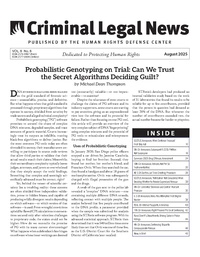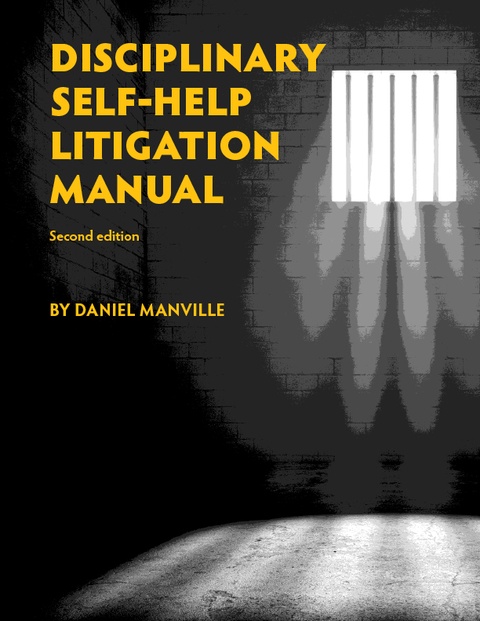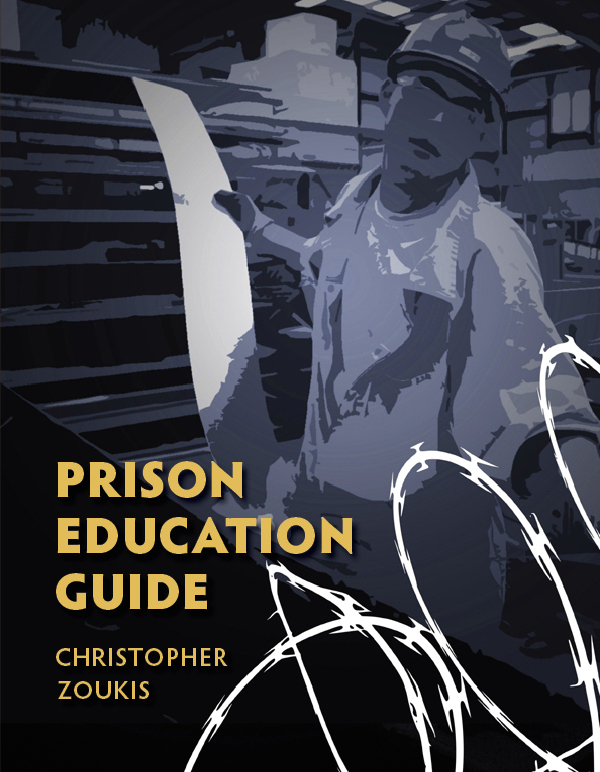DNA evidence has long been hailed as the gold standard of forensic science—unassailable, precise, and definitive. But what happens when that gold standard is processed through proprietary algorithms that operate in secrecy, shielded from scrutiny by trade secrets and alleged technical complexity?
Probabilistic genotyping (“PG”) software promises to unravel ...
The Supreme Court of the United States held that when an offender convicted under § 924(c) had been sentenced prior to the enactment of the First Step Act but the sentence was subsequently vacated, a sentence “has not been imposed” for purposes of the retroactivity provision of § 403(b), and thus, § 403(a)’s ...
In a case of first impression, the United States Court of Appeals for the Fifth Circuit held that, where a defendant’s 28 U.S.C. § 2255 petition was not decided on the merits and the Court afterward recalled the mandate dismissing the direct appeal and affirmed the conviction, a subsequent § 2255 petition ...
On April 30, 2025, the United States Sentencing Commission submitted amendments to the federal sentencing guidelines to Congress, set to take effect on November 1, 2025, absent congressional action. These amendments address two significant circuit court conflicts concerning the application of robbery guidelines and criminal history calculations. This article provides ...
As state after state abandons the failed experiment of marijuana prohibition, a critical public safety challenge remains largely unaddressed: how do we accurately and fairly identify individuals whose cannabis use has rendered them dangerously impaired behind the wheel or in safety-sensitive workplaces? Dr. William J. McNichol’s paper in the ...
On April 30, 2025, the United States Sentencing Commission (“USSC”), an independent agency within the judicial branch established under the Sentencing Reform Act of 1984, promulgated a multi-part amendment to the federal sentencing guidelines addressing drug offenses, effective November 1, 2025. This amendment revises guidelines related to drug trafficking, ...
The United States Court of Appeals for the Tenth Circuit held that motor vehicles are not per se instrumentalities of interstate commerce for purposes of the Commerce Clause, so the intrastate use of a motor vehicle during the commission of an alleged kidnapping alone is not sufficient to support a ...
The Supreme Court of the United States held that U.S. District Courts may not consider 18 U.S.C. § 3553(a)(2)(A), retribution vis-à-vis defendant’s underlying criminal offense, when determining whether to revoke a term of supervised release because Congress’ decision to enumerate eight of the ten sentencing factors set forth in § 3553(a) but ...
In a case of first impression, the Supreme Court of Nebraska clarified the procedure to be used when crediting time spent in pretrial incarceration against multiple contemporaneously-imposed sentences pursuant to Neb. Rev. Stat. § 83-1.106, regardless of whether they are to be served consecutively or concurrently. The Court instructed that the ...
The United States Court of Appeals for the First Circuit vacated a defendant’s sentence due to the prosecutor’s breach of the parties’ plea agreement, and the Court ordered resentencing before a different judge.
Before the Court was the appeal of Hector Maldonado-Maldonado, who along with one of his cellmates, Miguel ...
In recent years, the federal government has been repurposing data originally collected for public services—such as tax filing, health care enrollment, and labor oversight—into a powerful tool for mass surveillance and law enforcement. Fueled by executive orders, agreements between government agencies, and partnerships with private companies, this shift has unfolded ...
The Court of Appeal for California, Fifth Appellate District, held that petitioner Tramell Vernon Taylor was entitled to resentencing on his conviction for first-degree murder because the trial court misconstrued the elements of the applicable offense and could not find petitioner guilty under a valid theory of murder.
Background
Between ...
The United States Court of Appeals for the Ninth Circuit overturned the U.S. District Court for the Western District of Washington’s denial of a defendant’s motion to suppress evidence of child exploitation, holding that investigators relied on an overbroad and unspecific warrant provision when they discovered the evidence.
Background
On ...
The Supreme Court of Illinois held that a conviction for attempted first degree murder requires proof that the defendant acted with the intent to kill without lawful justification, rejecting the notion that intent to kill alone is sufficient. Because the jury instruction omitted this element and the jury’s finding of ...
The surveillance state has a new tool in its arsenal that takes advantage of advances in AI large language models. Only, this chatbot’s conversations could land people in prison. The product from Massive Blue is called Overwatch, and its purpose is to collect information on “college protestors” and “radicalized political ...
A common trope in science fiction involves a dystopian future where every trip to the airport, government office, and other routine errands of daily life requires residents to show a standardized ID, their every move tracked through a web of mass surveillance. That fictional dystopian future came one step closer ...
The United States Court of Appeals for the Eleventh Circuit held that the defendant had clearly and unequivocally asserted his Sixth Amendment right to self-representation at sentencing, which imposed a constitutional duty on the U.S. District Court for the Southern District of Florida to conduct a Faretta inquiry and that ...
A teenager fatally shot by a deputy on a roadway in New Mexico during the previous summer represents part of an escalating pattern of such incidents.
While driving across the plains of southern New Mexico one evening last summer, Gina Via initially mistook a figure for an elk. Approaching nearer, ...
When it was discovered that the Drug Enforcement Administration (“DEA”) had obtained access to billions of American phone records through a program they called “Hemisphere,” advocates for civil liberties were not convinced—in spite of assurances by the Obama administration—that the program was legal.
When the Hemisphere program came to light, ...
The United States Court of Appeals for the Fourth Circuit held that the U.S. District Court for the Eastern District of Virginia did not abuse its discretion in granting the defendant’s motion for compassionate release based on sentencing disparities alone between the defendant and his co-defendants because those disparities constituted ...
Loaded on
Aug. 1, 2025
published in Criminal Legal News
August, 2025, page 49
Alabama: Walker County Sheriff Nick Smith faces six misdemeanor counts after a grand jury indicted him on May 30, 2025, for knowingly employing uncertified personnel. WBRC in Birmingham reported that Smith’s second-in-command, Chief Deputy Ralph Williams, was also indicted on one count of providing false or misleading information to the ...






